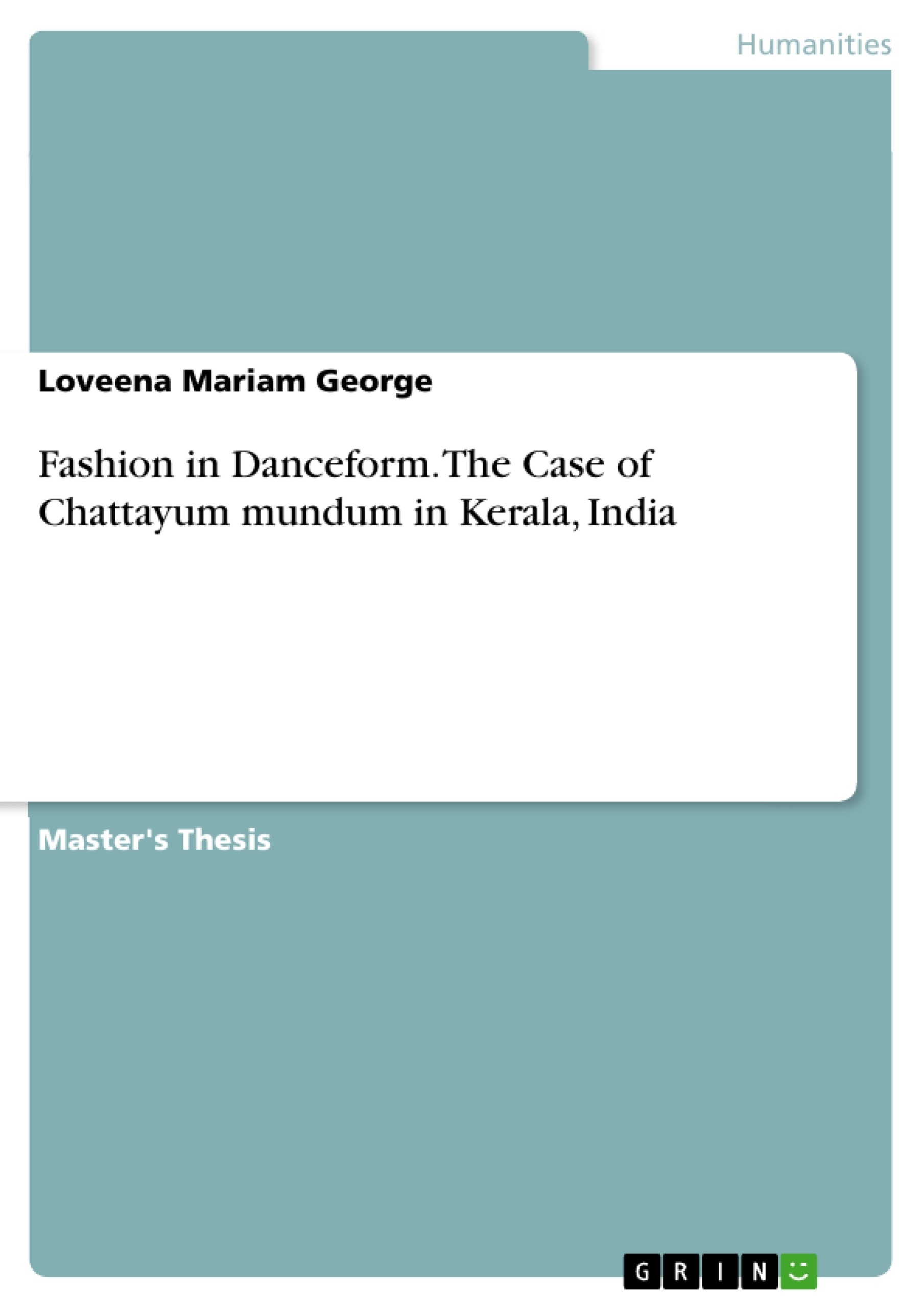This paper is an analysis on the transformations seen on the Chattayum mundum which is the traditional attire of Syrian Christian women in Kerala, for it to have emerged as a costume for Margamkali, which is a native Syrian Christian dance-form. I argue that although the Chattayum mundum became part of a vanishing tradition among the Syrian Christians; but by virtue of Margamkali, the Chattayum mundum has become revitalised. Thereby, the interaction between Chattayum mundum and Margamkali in contemporary Kerala, is analysed. The preliminary part of this research has been complemented by the successive phenomenological research that was based on the interviews of Syrian Christian women in Kerala. Detailed interpretations on the interviewees’ lived experiences of having worn the Chattayum mundum has been accounted for. Also, the coexistence of Chattayum mundum in its traditional form and as a Margamkali costume in the contemporary context, has been analysed. Thus, this research serves as a specific case study for heritage practitioners, to understand the potential role of contemporary artforms in revitalising the traditional forms of fashion.
Table of Contents
- Abstract
- Acknowledgement
- Chapter 1
- Introduction
- Key terms
- Literature Review
- Research gap
- Statement of the problem
- Statement of Aim
- Research question
- Research Outcomes
- Methodology
- Limits of scope of research
- Chapter 2-Syrian Christians in Kerala
- The History of Syrian Christians
- Traditions of Syrian Christians
- Syrian Christian dance-form of Margamkali
- Chapter 3 - The dressing of Syrian Christian women
- History of Syrian Christian women's dressing
- Design of Syrian Christian women's dressing
Objectives and Key Themes
This thesis investigates the transformation of the Chattayum mundum, a traditional attire of Syrian Christian women in Kerala, India, into a costume for Margamkali, a native Syrian Christian dance-form. It explores the revitalization of the Chattayum mundum through its integration into Margamkali, despite its decline within the Syrian Christian community. The research focuses on the interaction between these two elements in contemporary Kerala, analyzing the lived experiences of women wearing the Chattayum mundum and the coexistence of its traditional and costume forms. This study aims to provide a case study for heritage practitioners, highlighting the potential of contemporary art forms in reviving traditional fashion practices.
- The transformation of the Chattayum mundum into a Margamkali costume
- The revitalization of the Chattayum mundum through its integration into Margamkali
- The interaction between Chattayum mundum and Margamkali in contemporary Kerala
- The lived experiences of women wearing the Chattayum mundum
- The potential of contemporary art forms in revitalizing traditional fashion practices
Chapter Summaries
Chapter 1 introduces the research topic, outlining key terms, literature review, research gap, problem statement, research aims and questions, methodology, and limitations of scope. Chapter 2 provides a detailed analysis of the Syrian Christian community in Kerala, examining their history, traditions, and the dance form of Margamkali. This chapter explores the significance, performance, symbolism, and evolution of Margamkali. Chapter 3 delves into the history and design of Syrian Christian women's dressing, including the Chattayum mundum. It examines the evolution of Syrian Christian women's dress, the reflection of caste on their attire, and the role of clothing as a school uniform. The chapter also discusses the Chattayum mundum's different forms and its categorization based on usage.
Keywords
This research focuses on Syrian Christian women, Chattayum mundum, Margamkali, and contemporary Kerala. It explores the interplay of traditional and contemporary practices, specifically the revitalization of a traditional costume through its integration into a dance form.
- Arbeit zitieren
- Loveena Mariam George (Autor:in), 2023, Fashion in Danceform. The Case of Chattayum mundum in Kerala, India, München, GRIN Verlag, https://www.grin.com/document/1494781



